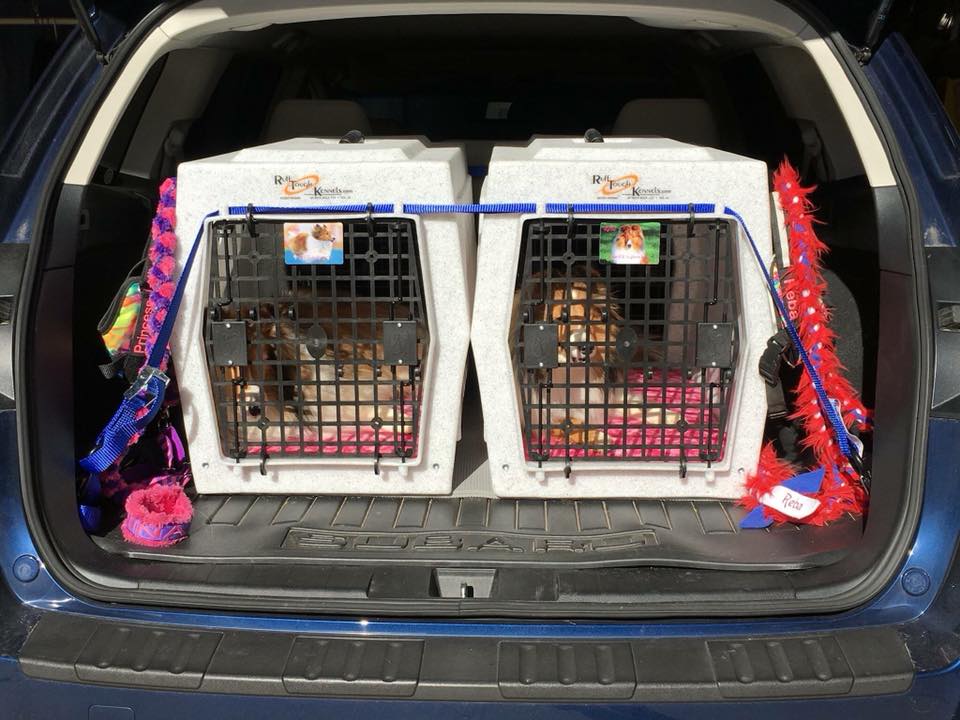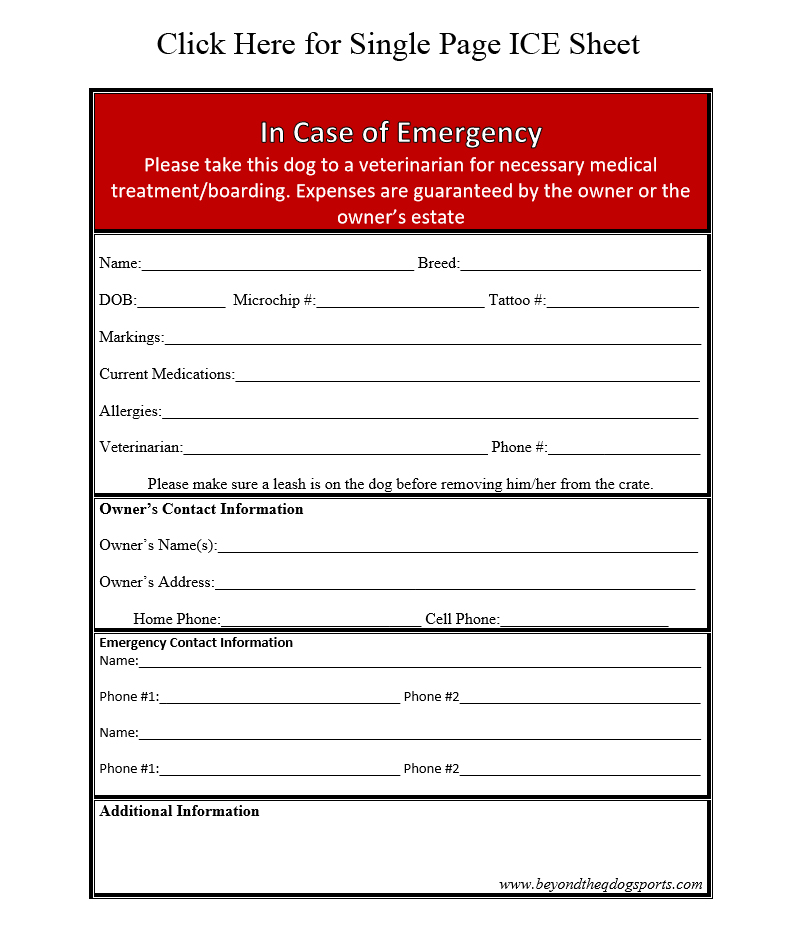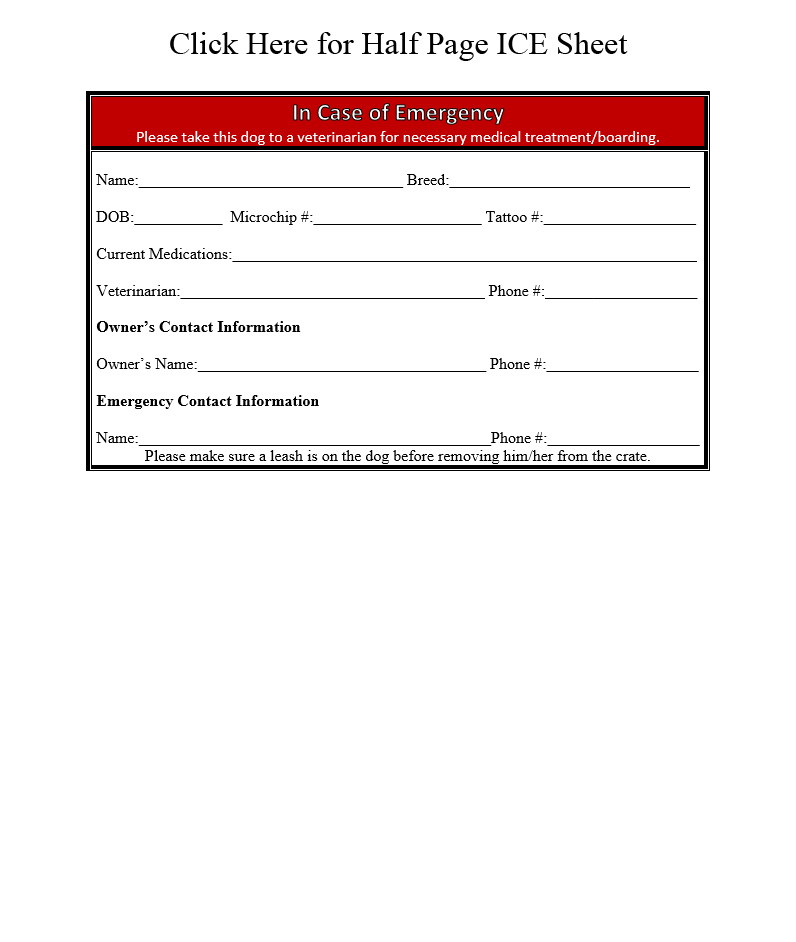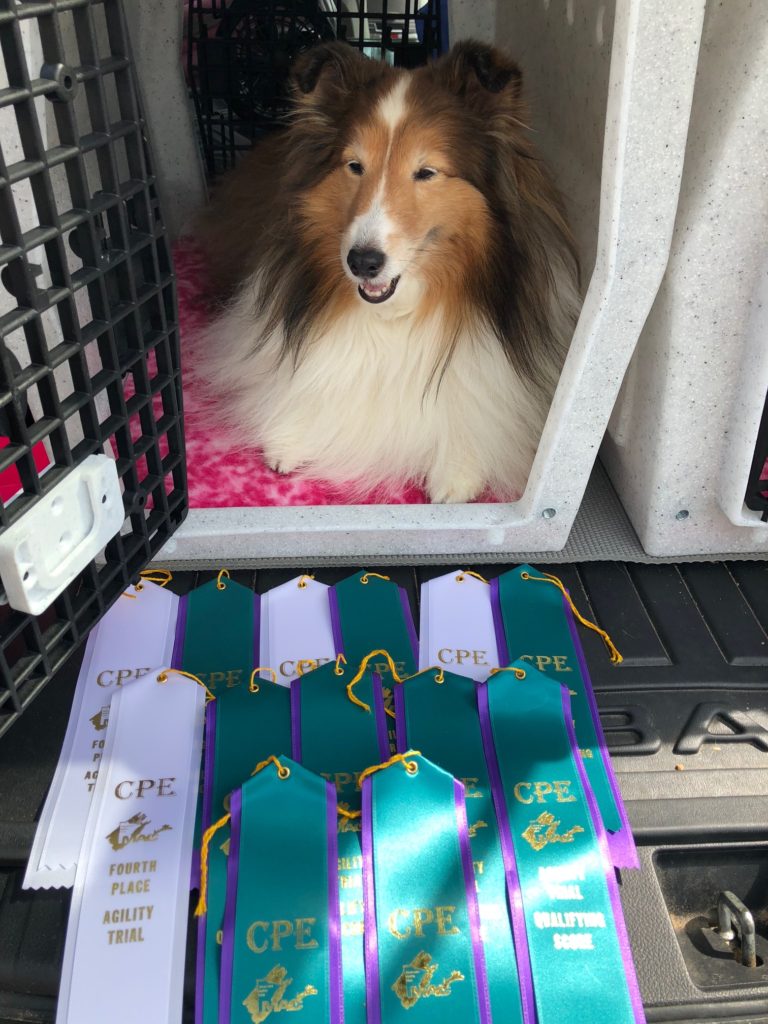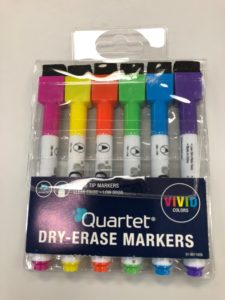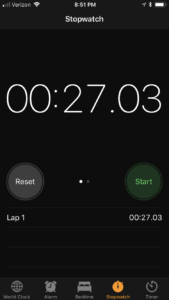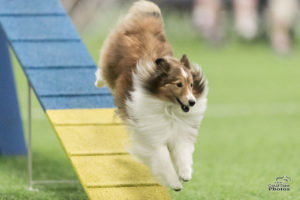Getting in an accident; it’s something many do not want to think about. Yet according to the National Highway and Safety Administration there were more than 6 million police reported accidents in 2016 with 34,439 of them being fatal. So what will happen if you are traveling with your dog and are in a serious car crash?
Secure Your Dog
First you want to make sure your dog is safely secured in your vehicle. Crates and harnesses are a way to help protect your dog in case of an accident. There are several crates and harnesses that have now been made specifically to help protect your pet in case of a crash (we will go into more details about these in future posts.) Although many people think they are being kind by letting their dogs ride freely in their vehicle, you could be setting up your dog and your passengers for serious injury in an accident. An unrestrained 20lb dog in a 50 mph car crash will exert approximately 1000lbs of force. Imagine what would happen if that dog hits the windshield or even a passenger in the vehicle! If the dog is ejected from the vehicle there is also a high risk of injury and/or the dog fleeing the scene in a panic.
Create ICE Sheets
Even if your dog is properly secured things can still go wrong. What if you are physically injured and unable to attend to your dog? This is why having In Case of Emergency (ICE) information readily available to emergency service providers is so important.
I now carry ICE sheets for each of dogs in my glove box and have information clearly labeled on their crates as to how to find this information. These sheets have each dog’s basic information, any medications, veterinarian and emergency contact information as well as my information. I also included a picture to help easily identify the dog. Since dog safety is something I am very passionate about, I have included links to 3 different ICE sheets I created at the end of this post. Feel free to print them out to use for your own dog. You can also share them with other dog lovers. I just ask that you credit getting them from www.beyondtheqdogsports.com and do not claim you made them or try to resell them.
Great now I have the sheets but how do I label my crates so emergency service providers can quickly find the information? I took advantage of a free offer from the popular photo site Shutterfly to create fun magnets. Currently I have Ruff Tough kennels so I attached the magnets to my crates with magnetic tape. I have seen numerous dog sports competitors that have the popular Variocages take advantage of the bigger magnets to fit even more information right on the crate. Below are examples of magnets I made for my girls.
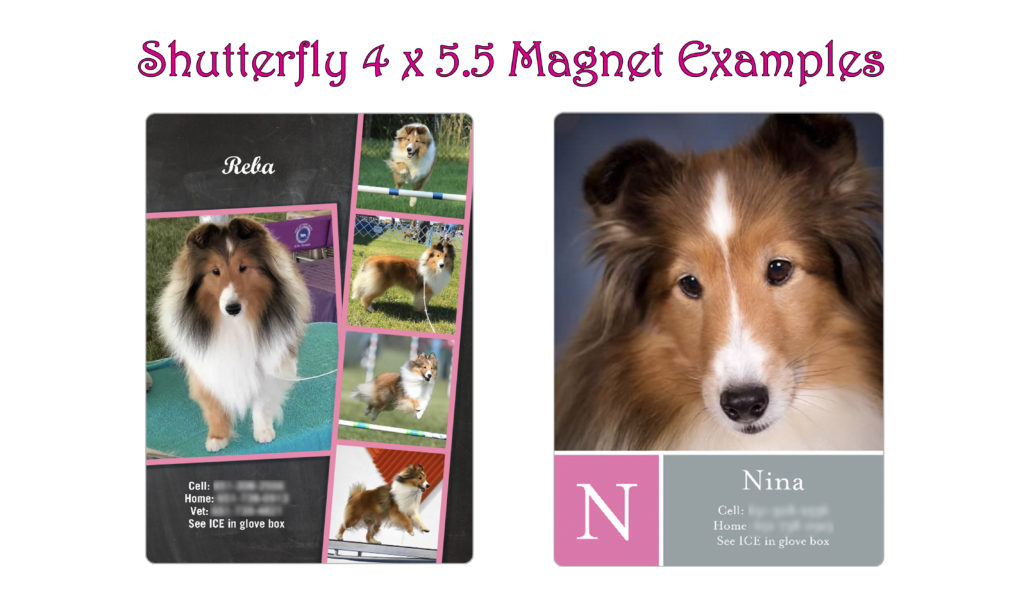
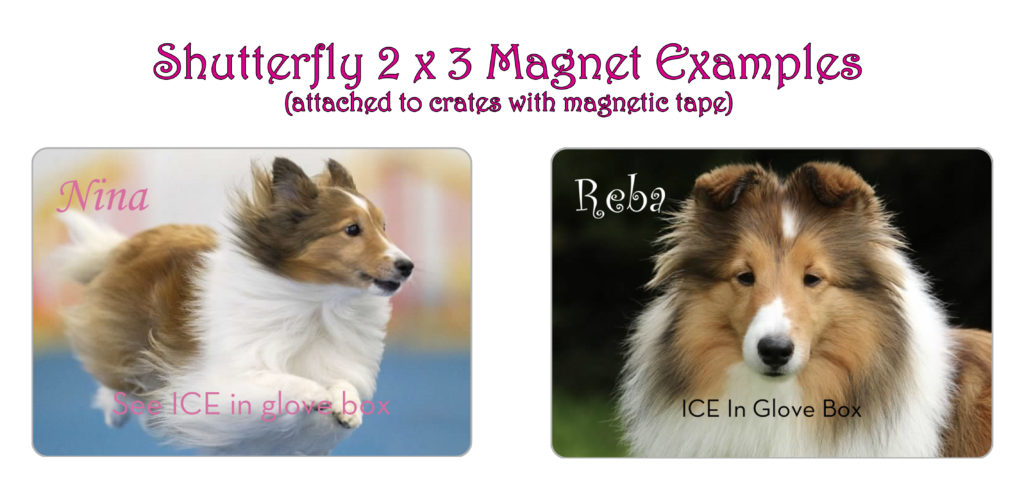
A rescue group also developed some great ICE tubes that attach with Velcro right to the crate. Information sheets can be put right inside along with leashes and other pertinent information. The tubes come in three sizes to fit a variety of crates. I have no affiliation with this site but think these tubes could be a good option for some people so have included a link here where you can find out more information and order http://www.crafts4k9rescue.org/7-5-inch-k9-emergency-info-tubes-reflective-blue-text-112138
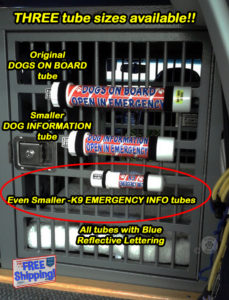
As dog sport competitors we travel more with our dogs and therefore have a higher risk of an accident. Although I hope no one reading this ever has to be in the situation where this information needs to be used, I hope this helps you be prepared in case it does.
Here are the links to the ICE sheets.
